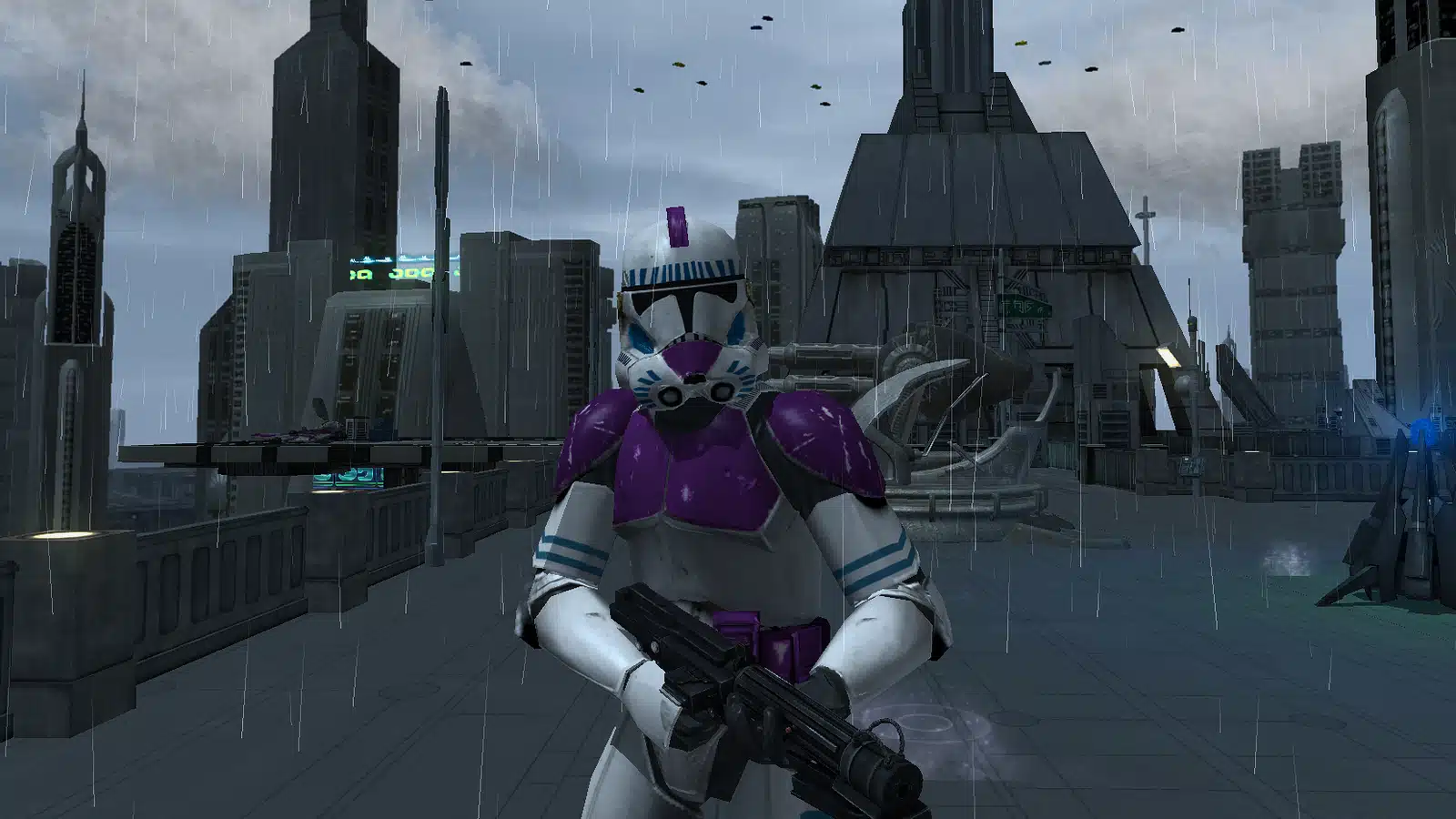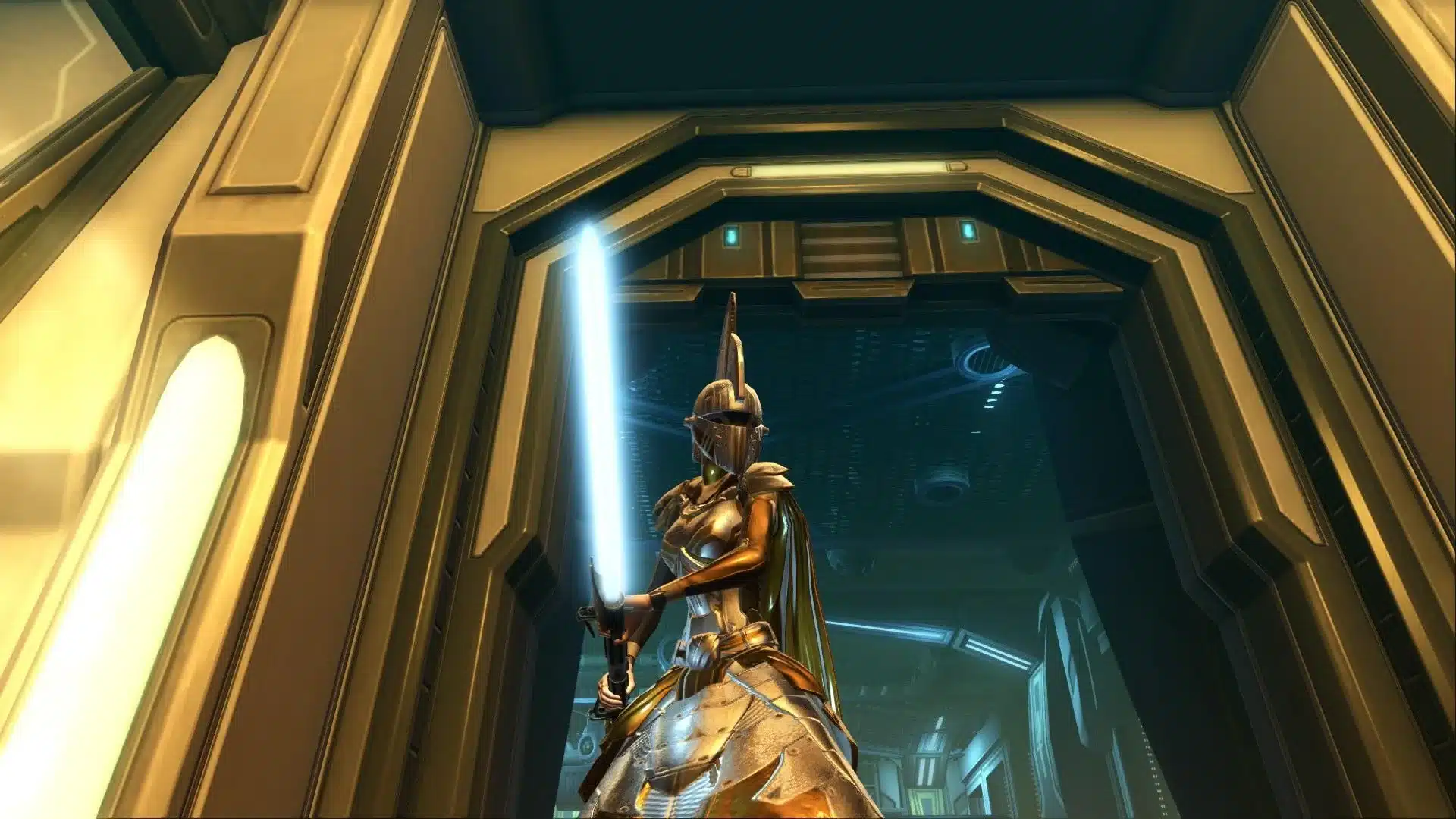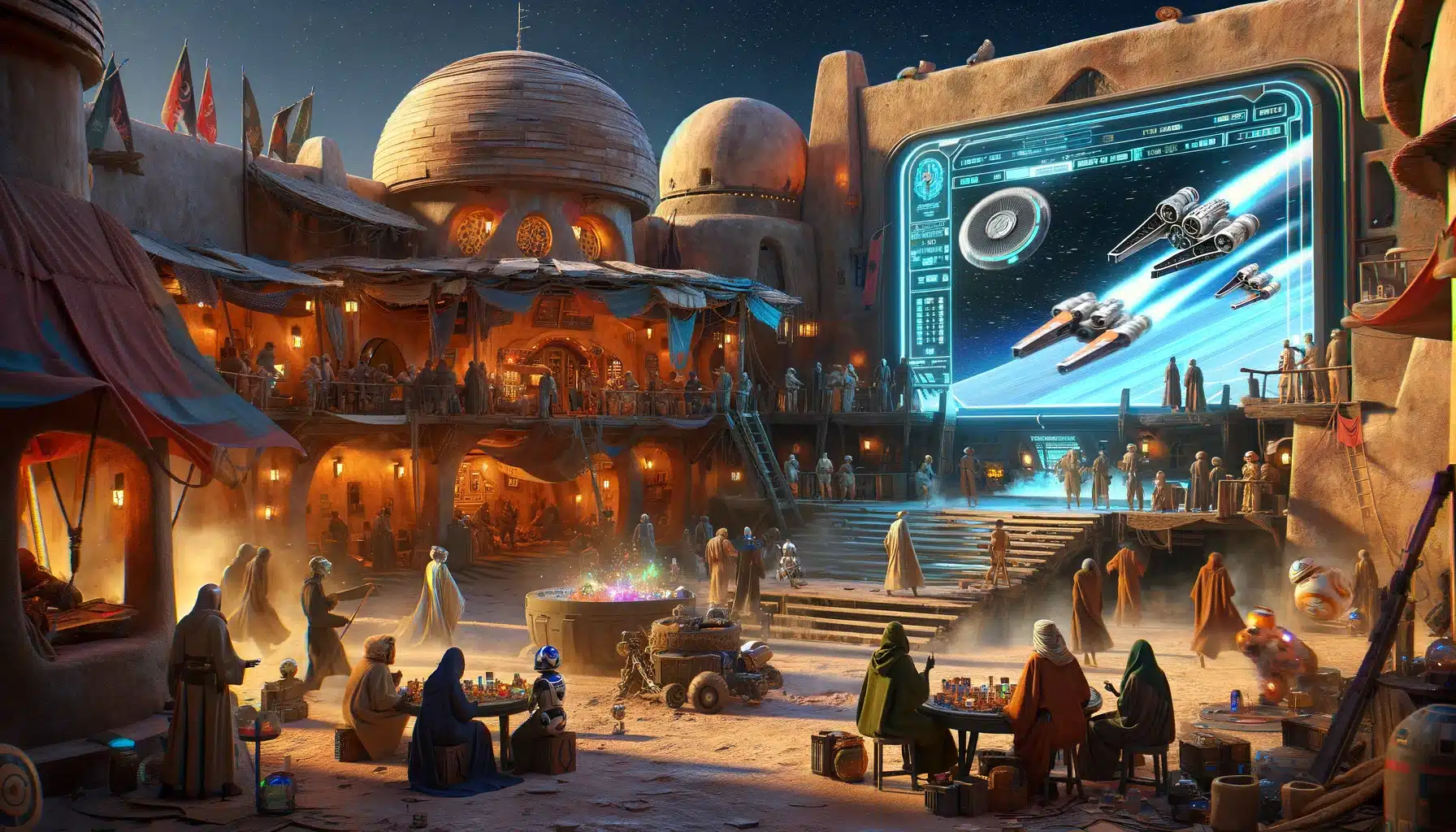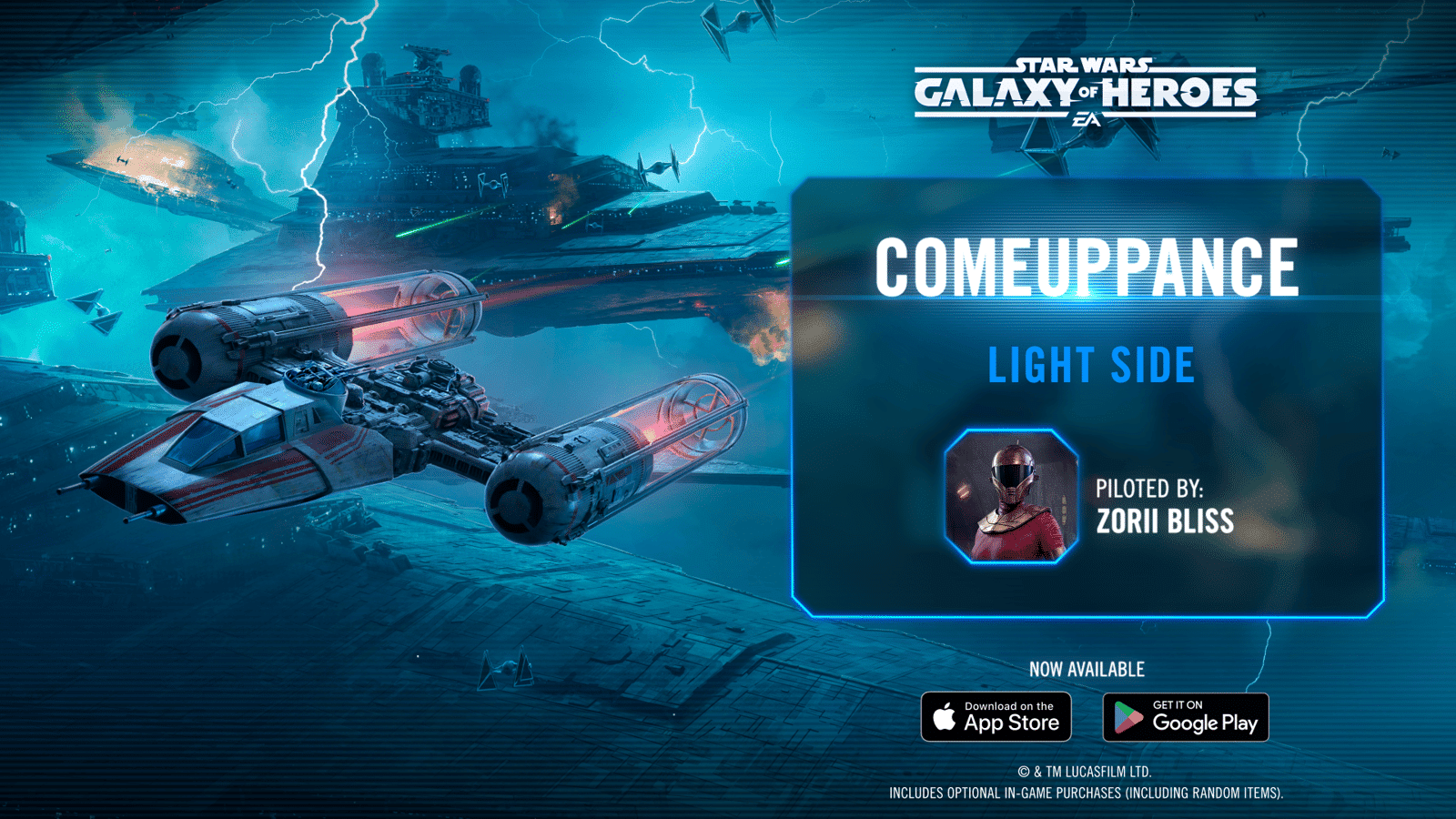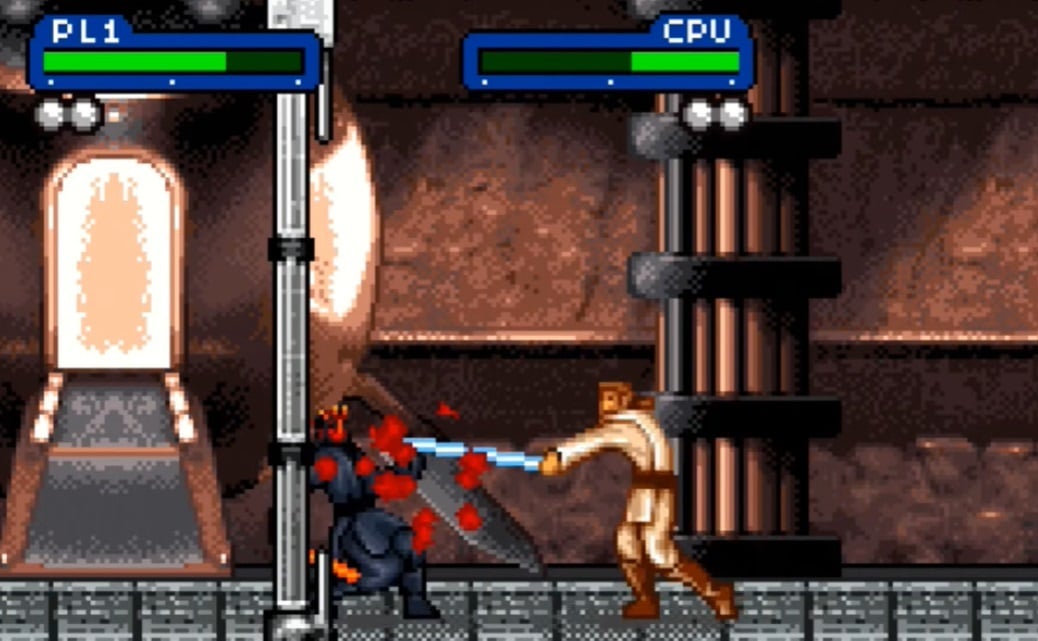Introduction
In the realm of pop culture, few franchises have captured the imagination quite like Star Wars. With its epic storylines, iconic characters, and mesmerizing visuals, the saga has become a cornerstone of cinematic history. However, there’s another medium where the Star Wars universe unfolds in even more vivid and interactive ways: video games. Unlike the passive experience of watching a movie, video games offer a unique and immersive way to explore this beloved galaxy. In this article, we will delve into the various aspects that set the video game experience apart:
- Immersive Interactivity: Understanding how video games provide a more interactive and personalized experience compared to movies.
- Exploration of Uncharted Territories: Examining the expansive and detailed worlds within the games that go beyond the boundaries of the films.
- Character Development and Personalization: Looking at how players can create and develop their own characters within the Star Wars universe.
- Pacing and Exploration Freedom: Discussing the flexibility of games in allowing players to explore at their own pace and dive deep into the lore.
- Community Engagement: Highlighting the communal aspects of gaming that foster connections among Star Wars fans around the world.
Through these points, we’ll explore how Star Wars video games offer an unparalleled journey into the heart of the galaxy far, far away, providing experiences that extend well beyond what the movies can offer. Whether it’s through wielding a lightsaber in the shoes of a Jedi or exploring the outer reaches of space, these games allow fans to engage with the Star Wars universe in a deeply personal and interactive way.
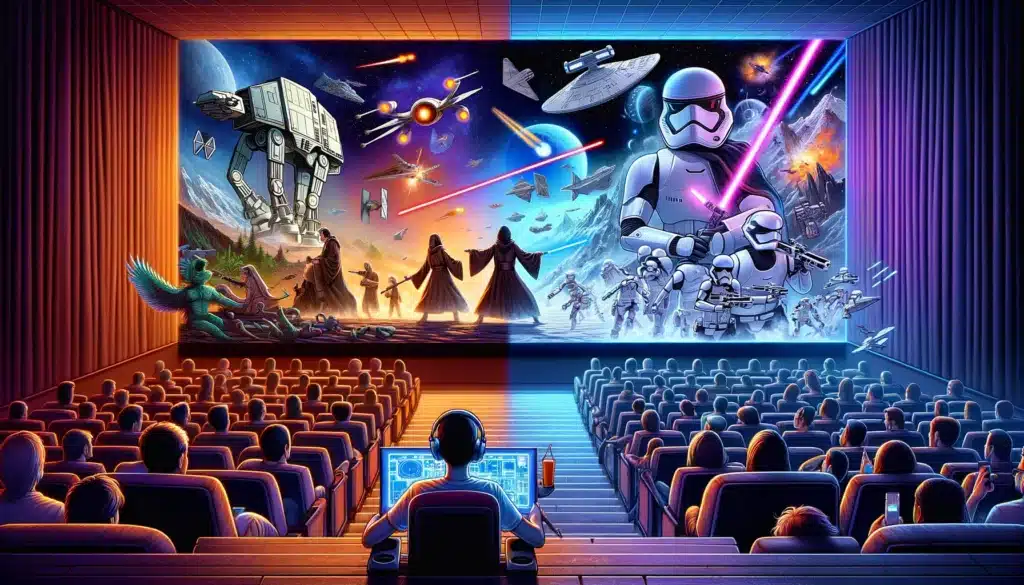
Immersive Interactivity: Living the Star Wars Experience
The immersive interactivity offered by Star Wars video games goes far beyond what any movie can provide. It’s a unique draw that pulls players directly into the heart of the galaxy, allowing them to experience the Star Wars universe firsthand.
Personal Involvement in the Storyline: Unlike movies, where viewers are passive spectators, video games place players in the center of the action. In games such as “Star Wars Jedi: Fallen Order,” players don’t just watch a Jedi’s journey; they are the Jedi. Every decision and action taken by the player directly influences the course of the story, making the experience intensely personal and engaging.
Real-Time Combat and Strategy: The thrill of real-time combat is a key aspect of interactivity in Star Wars games. Players experience the rush of battling with lightsabers, strategizing in space combats, and using the Force. This active participation in battles, as seen in “Star Wars: Battlefront II,” allows players to experience the excitement and challenges of being a part of the Star Wars universe in a way that movies simply can’t match.
Exploring and Interacting with the Environment: Video games allow players to explore the Star Wars universe in a tactile and detailed manner. From the sprawling cityscapes of Coruscant to the rugged terrain of Tatooine, players can wander, discover hidden secrets, and interact with the environment. This level of exploration, offered in open-world games like “Star Wars: The Old Republic,” gives a sense of scale and depth to the universe that watching a film cannot provide.
Choice and Consequence: Many Star Wars games incorporate elements of choice, allowing players to shape their journey through the decisions they make. This can affect character alignment, story outcomes, and even relationships with other characters. The role-playing game “Knights of the Old Republic” is a prime example, where player choices have significant impacts on the narrative, leading to different endings.
Experiencing Different Aspects of the Universe: Video games enable players to experience various roles and perspectives within the Star Wars universe. Players can be a smuggler, a Sith Lord, a rebel fighter, or a bounty hunter, each offering a different experience and viewpoint of the galaxy. This multifaceted approach allows for a more comprehensive understanding and appreciation of the expansive Star Wars lore.
Simulation and Training: Some games, like the “Star Wars Flight Simulator,” allow players to experience simulations of flying different spacecraft. This is not just about the thrill of piloting; it’s also about mastering the skills and understanding the intricacies of different starships, something that’s only briefly touched upon in the movies.
In summary, the immersive interactivity of Star Wars video games offers a compelling and multifaceted way to experience the saga. It’s an opportunity for fans to live out their Star Wars fantasies, to actively participate in and shape stories within the universe, and to engage with its vast and diverse world in a way that movies alone cannot offer. This level of immersion and interaction is a powerful testament to the unique experiences that video games can provide.
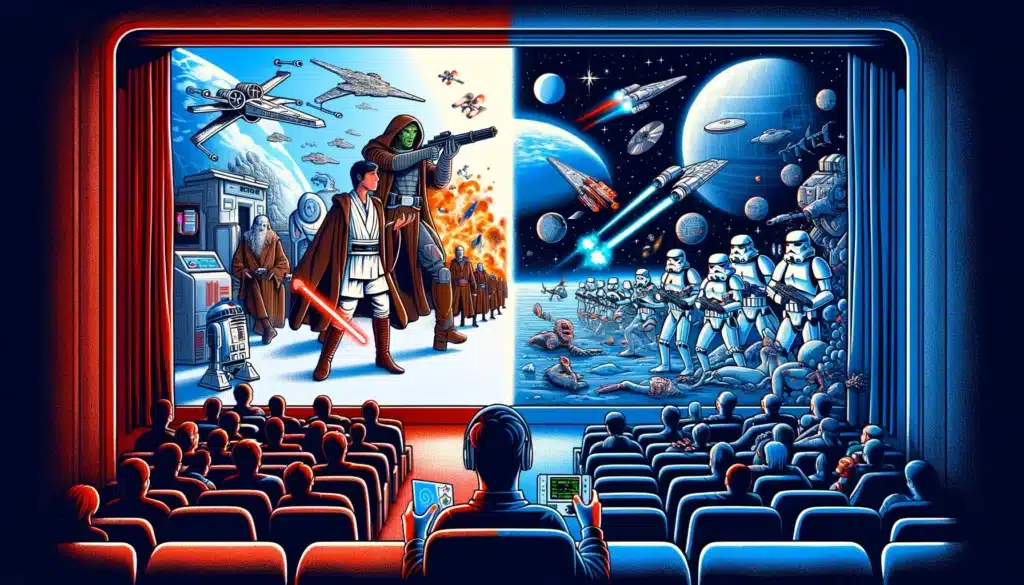
Exploring Uncharted Territories
One of the most captivating aspects of Star Wars video games is their ability to take players on journeys to uncharted territories within the expansive Star Wars universe. These games explore realms and eras that the movies may only briefly touch upon or not cover at all, offering fans new perspectives and deepening their understanding and appreciation of the saga.
Venturing Beyond the Known Galaxy: Video games have the unique ability to transport players to locations that movies have never explored. From the ancient Sith worlds in “Star Wars: The Old Republic” to the uncharted regions in “Star Wars Jedi: Fallen Order,” these games allow players to venture far beyond the familiar settings of the films. This exploration not only adds depth to the existing lore but also enriches the universe with new stories and cultures.
Diving into Different Time Periods: Unlike the movies, which are primarily set around the Skywalker saga, video games delve into various time periods, exploring the rich history of the Star Wars universe. Knights of the Old Republic,” for instance, takes players thousands of years back, giving a glimpse into the ancient history of the Jedi and Sith. This allows fans to experience the Star Wars universe’s evolution over millennia, offering a broader and more diverse understanding of its history.
Introducing New Characters and Species: Video games introduce players to a plethora of new characters and species, expanding the universe’s diversity. These characters often have their own backstories and quests, providing new narratives and perspectives. Games like “Star Wars: Galaxy of Heroes” feature an extensive roster of characters from all over the galaxy, each adding their unique flavor to the Star Wars mythos.
Expanding the Lore: Video games have the creative freedom to expand the lore of the Star Wars universe. Through quests, dialogues, and in-game texts, players can learn about the socio-political structures of different planets, the philosophies of various Force-using groups, and the intricacies of intergalactic trade and conflict. This level of detail creates a richer, more textured universe for fans to explore and understand.
Environmental Storytelling: Star Wars games often use their environments to tell stories. The ruins of ancient civilizations, the remnants of epic battles, and the thriving cities of different worlds all tell their own stories, contributing to a deeper narrative experience. Exploring these environments allows players to uncover the galaxy’s history in an interactive and engaging way.
Role of Side Quests and Easter Eggs: Side quests and Easter eggs in games often lead to the discovery of hidden corners of the universe. These elements encourage exploration and reward players with unique insights into the Star Wars lore, making the gaming experience both exciting and informative.
In conclusion, the exploration of uncharted territories in Star Wars video games offers fans a doorway to a wider and more diverse galaxy than what is presented in the movies. These games serve as exploratory vessels, charting new courses in the vast Star Wars universe and enriching the overall saga with fresh narratives, characters, and worlds. Through this exploration, players gain a deeper, more comprehensive understanding of the Star Wars lore, making their gaming experience both immersive and enlightening.
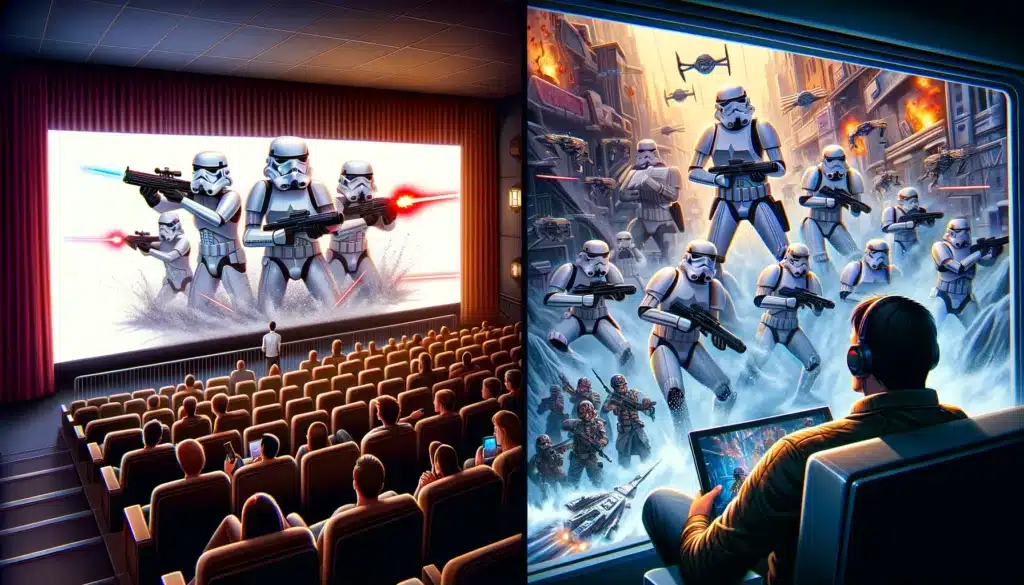
Character Development and Personalization
n the realm of Star Wars video games, character development and personalization stand as defining features that set the gaming experience apart from the movies. Unlike the passive experience of watching a film, video games offer players the unique opportunity to craft and evolve their own characters within the rich tapestry of the Star Wars universe.
Creating Your Own Star Wars Legend: Many Star Wars games allow players to create their own characters from scratch. This process goes beyond just physical appearances; players can often choose their character’s background, skills, and even moral alignment. In games like “Star Wars: The Old Republic,” this level of customization enables players to live out their own Star Wars fantasies, be it as a Sith Lord, a Jedi Knight, or a cunning bounty hunter.
Meaningful Choices and Consequences: Character development in these games is often driven by the choices players make. These decisions can influence not just the storyline but also how the character evolves over time. In “Knights of the Old Republic,” for instance, choices affect a character’s alignment with the light or dark side of the Force, which in turn influences their abilities and even physical appearance.
Narrative Depth and Relationships: As players progress through these games, their characters often develop complex relationships with other characters, whether they’re allies, enemies, or something in between. These relationships can have significant narrative impacts and add emotional depth to the gameplay. The player’s interactions with companion characters in “Jedi: Fallen Order” exemplify this, adding layers to the story and the player’s role in it.
Skill Progression and Customization: Progression systems in these games often allow players to tailor their character’s skills and abilities to their play style. Whether it’s mastering lightsaber combat, honing Force powers, or specializing in stealth or diplomacy, this progression leads to a more personalized and rewarding gaming experience.
Role-playing and Immersion: Role-playing elements in Star Wars games offer a depth of immersion that movies can’t. Players are not just controlling a character; they are living through them, making decisions, and experiencing the consequences. This immersive role-playing aspect, seen in games like “Star Wars Galaxies,” allows players to fully engage with the Star Wars universe in a personal and interactive manner.
Impact on the Player’s Journey: The personalization and development of characters in these games make the player’s journey feel unique. Each playthrough can be a different experience based on the character created and the choices made. This replayability factor is a significant draw for Star Wars games, offering new perspectives and experiences in each session.
In summary, character development and personalization in Star Wars video games offer an unparalleled level of engagement and immersion. They allow players to not only explore the Star Wars universe but to carve out their own place within it, creating personalized stories and experiences that resonate on a deeper level. This level of interaction and personal connection to the game world is something that simply cannot be replicated in the movie experience.

Pacing and Exploration at Your Own Speed
One of the most significant advantages that Star Wars video games have over movies is the ability for players to dictate the pacing and depth of their exploration. This freedom to roam and interact with the Star Wars universe at one’s own speed allows for a more personalized and thorough experience.
Control Over Narrative Pace: In a Star Wars film, the story unfolds at a predetermined pace, dictated by the director’s vision. In contrast, video games offer players control over how quickly or slowly they wish to progress through the story. In expansive RPGs like “Star Wars: Knights of the Old Republic,” players can choose to dive deeply into side quests and character backstories or focus on the main narrative, tailoring the pacing to their preference.
Detailed World Exploration: Video games allow players to explore the Star Wars universe in a way that movies cannot. Players can spend hours wandering through iconic locations like Mos Eisley, the Jedi Temple, or the streets of Coruscant, uncovering hidden secrets and lore that deepen their understanding and appreciation of the Star Wars universe.
Interaction with Environments and NPCs: Unlike movies, where environments serve as backdrops, video games offer interactive settings. Players can engage with non-playable characters (NPCs), gather items, and discover easter eggs. These interactions often reveal intricate details about the world, as seen in games like “Star Wars Jedi: Fallen Order,” where every corner of the galaxy holds potential for discovery.
Side Quests and Optional Content: The inclusion of side quests and optional content in Star Wars video games adds layers to the overall experience. These additional storylines and missions, which players can choose to pursue or ignore, offer insights into the broader Star Wars universe, often delving into aspects not explored in the films.
Player-Driven Exploration and Storytelling: The freedom to explore at one’s own pace allows players to create their own narratives within the Star Wars universe. This player-driven storytelling is evident in sandbox games like “Star Wars Galaxies,” where players can carve out their own path, be it as a trader, a bounty hunter, or a rebel fighter.
Learning at Your Own Pace: For new fans or those less familiar with the Star Wars lore, video games offer the opportunity to learn about the universe at a comfortable pace. This gradual immersion into the lore can be less overwhelming than trying to absorb the complex history and relationships presented in the films.
The Joy of Discovery: Exploration at one’s own pace in video games often leads to moments of joyous discovery. Uncovering a hidden Jedi relic, stumbling upon a familiar character, or unlocking a new part of the galaxy contributes to a sense of achievement and wonder that is unique to the gaming experience.
In conclusion, the pacing and exploration freedom provided by Star Wars video games offer a distinct advantage over the movies. They allow players to engage with the universe in a more in-depth, personalized, and interactive manner. This ability to explore at one’s own speed ensures that each player’s experience is unique, filled with discovery and a deepening appreciation for the rich and diverse Star Wars galaxy.
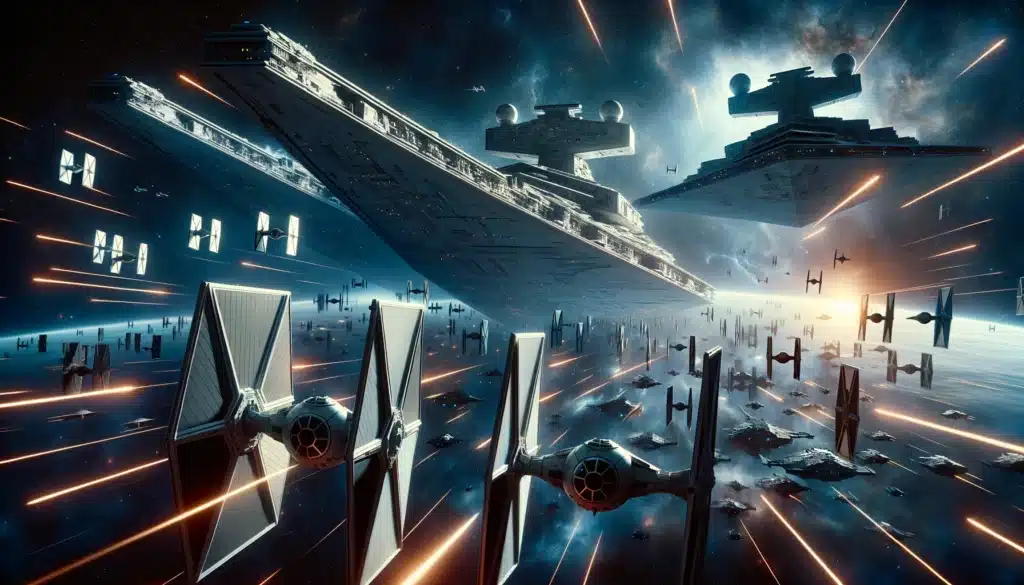
Engaging with the Community
Engaging with the community is a fundamental aspect of the Star Wars video game experience that sets it apart from the movies. While Star Wars films are typically a shared experience in theaters or among friends and family, video games extend this communal aspect to a global scale, creating a dynamic, interactive community of fans and players.
Multiplayer Gaming and Teamwork: Many Star Wars games offer multiplayer modes, allowing players from around the world to collaborate or compete against each other. Games like “Star Wars Battlefront II” provide an arena for players to engage in epic battles, strategize together, and share in the victories and defeats. This sense of teamwork and shared experience fosters a strong sense of community among players.
Online Forums and Discussions: The online community surrounding Star Wars games is vibrant and active. Forums and social media platforms are buzzing with discussions about game strategies, lore, and fan theories. These digital spaces allow fans to share their experiences, offer advice, and discuss their favorite aspects of the games, further enriching the Star Wars gaming experience.
Fan-Generated Content and Mods: The community also plays a creative role in the world of Star Wars gaming. Fans create mods, fan art, and even entire fan-made games, expanding the universe in new and exciting ways. This user-generated content not only demonstrates the creativity and passion of the Star Wars community but also offers fresh experiences for other players to enjoy.
Live Events and Esports: Star Wars video games have a presence in live events and esports, bringing fans together for competitive gaming and community-building activities. These events, whether they’re official tournaments or fan-organized meetups, offer a space for fans to celebrate their love for Star Wars, compete, and forge new friendships.
Support and Collaboration: The community aspect extends to support and collaboration among players. Experienced players often mentor newcomers, helping them navigate complex game mechanics or understand the lore. This collaborative environment enhances the gaming experience, making it more welcoming and enjoyable for all.
Shared Narrative Experiences: In multiplayer and role-playing Star Wars games, players often share narrative experiences, creating stories together that are unique to their group. This shared storytelling fosters a sense of camaraderie and collective creativity that can’t be replicated in other media.
Global Connection Through a Shared Passion: The most significant aspect of community engagement in Star Wars games is the connection it fosters among people worldwide. Regardless of geographical barriers, players come together bound by their love for the Star Wars universe. This global community transcends the game itself, creating lasting friendships and a sense of belonging among its members.
In conclusion, the community aspect of Star Wars video games is a vital component that significantly enhances the overall experience. It extends the enjoyment of the games beyond the screen, fostering global connections, collaborative creativity, and a shared passion for the Star Wars universe. This dynamic and interactive community is something the movies, despite their wide appeal, cannot offer in the same way, making it a unique and cherished part of the Star Wars gaming world.
Conclusion
As we draw our exploration to a close, it’s evident that Star Wars video games offer a uniquely enriching experience that transcends what is possible in the cinematic realm. These games don’t just complement the films; they expand, deepen, and personalize the Star Wars universe in a multitude of ways.
Bridging the Gap Between Fan and Universe: Star Wars video games bridge the gap between being a fan and actively participating in the Star Wars universe. They offer an interactive canvas for players to paint their adventures, bringing them closer to the galaxy far, far away than ever before.
Catalysts for Lasting Memories and Experiences: The experiences in these games aren’t fleeting like movie scenes; they’re lasting memories that players create and shape themselves. Whether it’s the thrill of piloting a starfighter or the satisfaction of successfully completing a complex mission, these games create personal stories that stay with the player long after the game is over.
Contributions to the Star Wars Legacy: Video games contribute significantly to the Star Wars legacy. They are not just spin-offs or ancillary media; they are a vital part of the Star Wars narrative, introducing new characters, stories, and worlds that have become beloved parts of the lore.
A Testament to Technological Innovation: These games also stand as testaments to technological innovation in storytelling and game design. They push the boundaries of what video games can achieve in terms of narrative depth, visual spectacle, and interactive storytelling.
A Unifying Force for Fans Worldwide: Perhaps one of the most significant contributions of Star Wars video games is their ability to unite fans worldwide. They foster a global community of enthusiasts who share a common passion, creating bonds that transcend the games themselves.
Continuing the Journey: As technology evolves and the gaming industry grows, the potential for even more immersive and captivating Star Wars gaming experiences is boundless. The journey through the Star Wars universe is far from over, with new games on the horizon poised to take fans on even greater adventures.
In conclusion, exploring the Star Wars universe through video games offers an experience that is unmatched by the movies. These games provide a depth of interaction, a level of immersion, and a personal connection to the Star Wars universe that is uniquely their own. They are a testament to the enduring appeal and expansive nature of the Star Wars saga, inviting fans to not just witness but actively participate in the epic, ever-unfolding story of a galaxy far, far away.
FAQ: Exploring the Star Wars Universe Through Video Games
Q: How do Star Wars video games differ from the movies? A: Star Wars video games offer interactive experiences, allowing players to explore the universe, make choices, and engage in the story, which is not possible in the passive format of movies.
Q: Can I explore new parts of the Star Wars universe in the games? A: Yes, video games often explore parts of the Star Wars universe not seen in the movies, including new planets, eras, and characters, enriching the overall lore.
Q: Do Star Wars games allow character customization? A: Many Star Wars games offer extensive character customization, including appearance, abilities, and sometimes moral alignment, allowing players to create their unique characters.
Q: Are the stories in the games considered Star Wars canon? A: It varies. Some games are part of the official canon, while others are considered non-canon but still offer compelling stories within the Star Wars universe.
Q: Do I need to be a Star Wars fan to enjoy these games? A: While being a fan might enhance the experience, many Star Wars games are designed to be enjoyable and accessible even to those new to the franchise.
Q: Can I interact with other players in Star Wars games? A: Yes, many Star Wars games have multiplayer modes, allowing you to team up with or compete against other players, adding a social aspect to the gaming experience.
Q: Are there different types of Star Wars games? A: Star Wars games span various genres, including RPGs, action-adventure, flight simulators, and strategy games, catering to a wide range of gaming preferences.
Q: How do the games enhance the Star Wars narrative? A: The games expand on the narrative of the universe, providing deeper backstories, exploring side narratives, and sometimes adding new perspectives to the main story.
Q: Can I influence the story in Star Wars video games? A: Many Star Wars games feature decision-making elements that can influence the story’s direction, offering a personalized experience based on your choices.
Q: Are Star Wars video games suitable for all ages? A: Star Wars games are designed for a wide range of audiences, but it’s best to check the game’s rating and content description to ensure it’s suitable for a specific age group.





